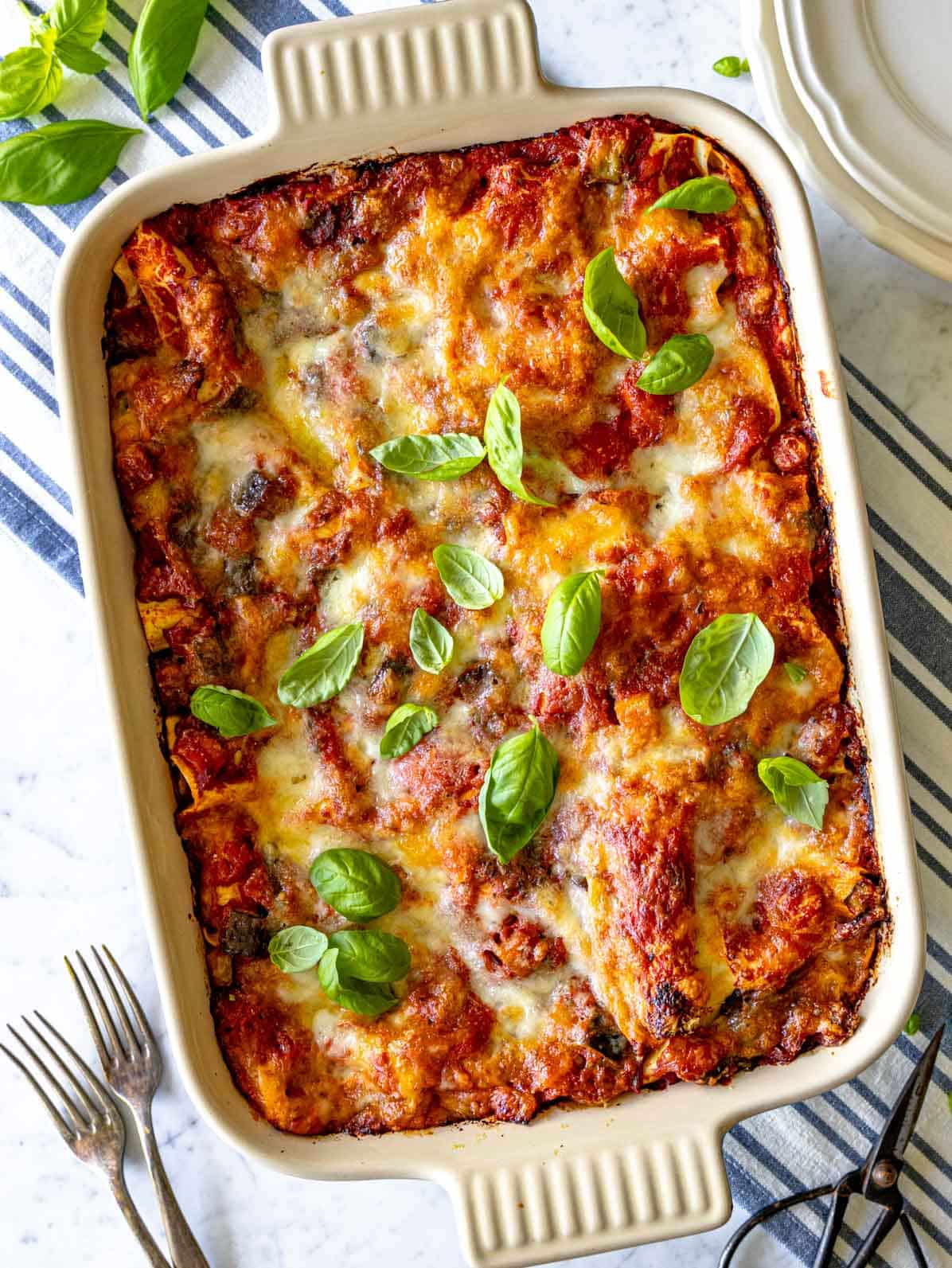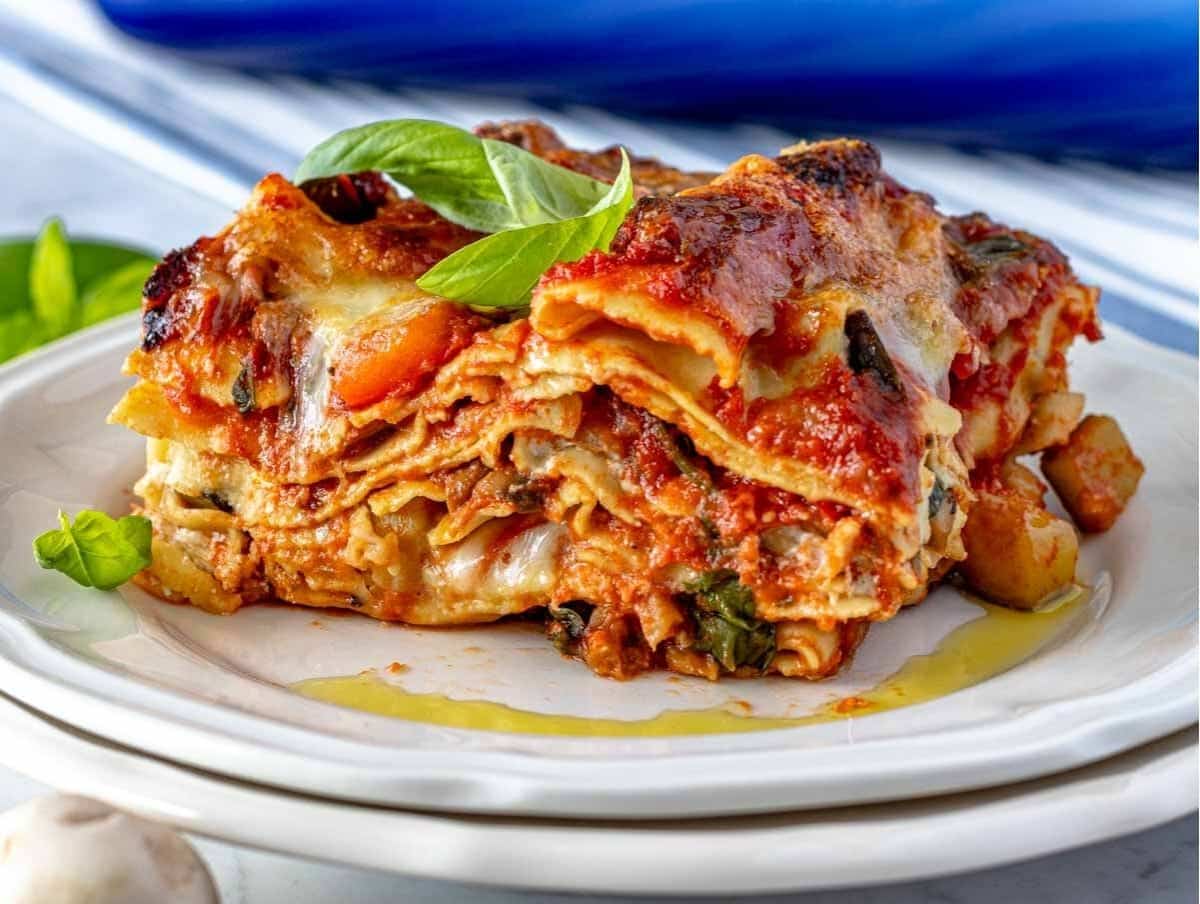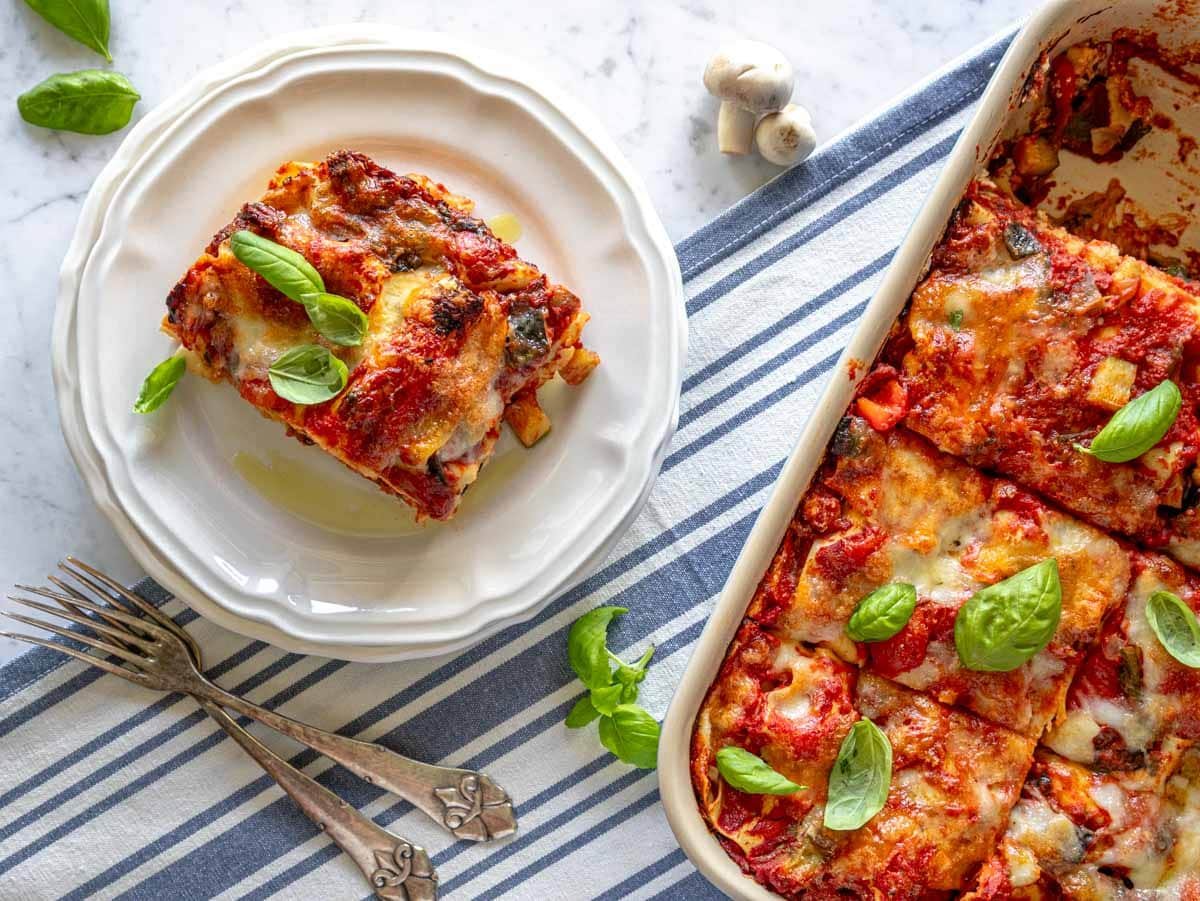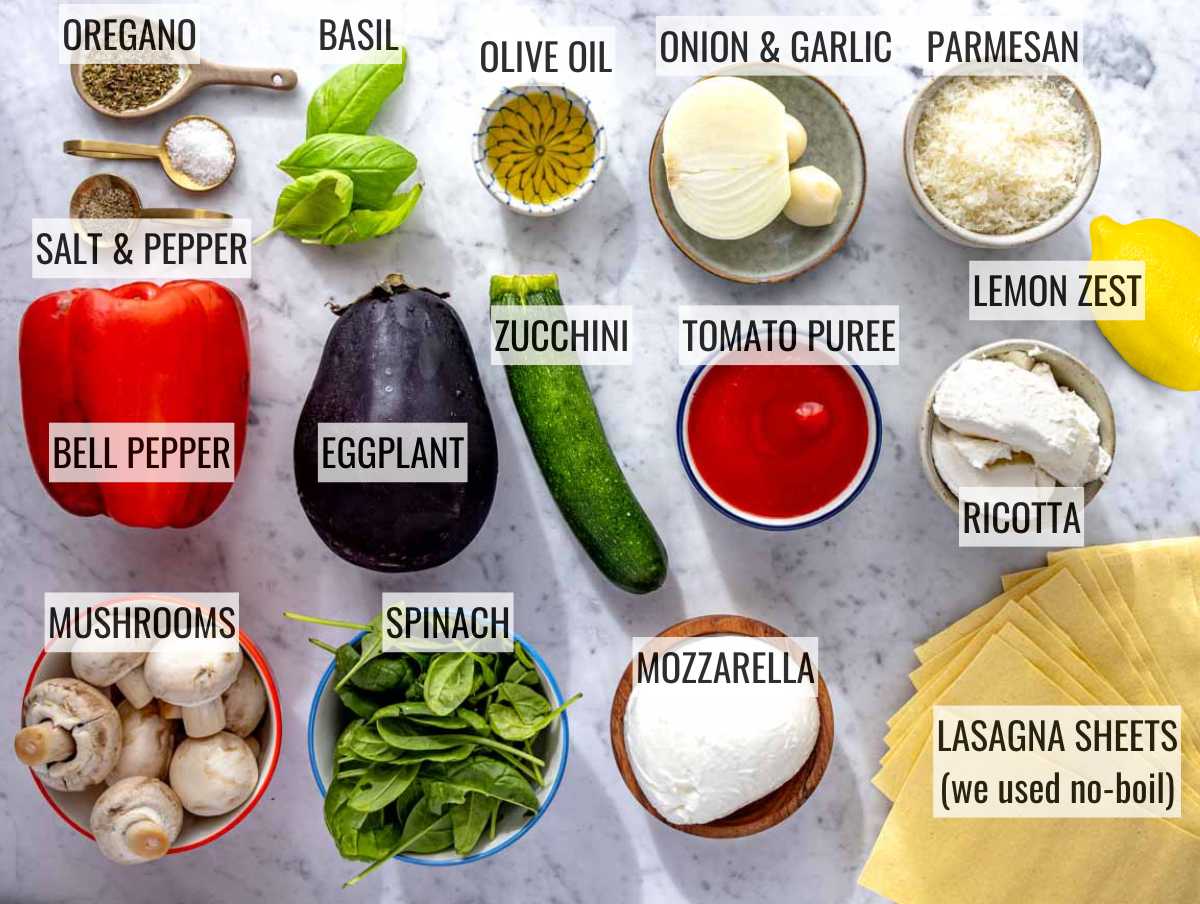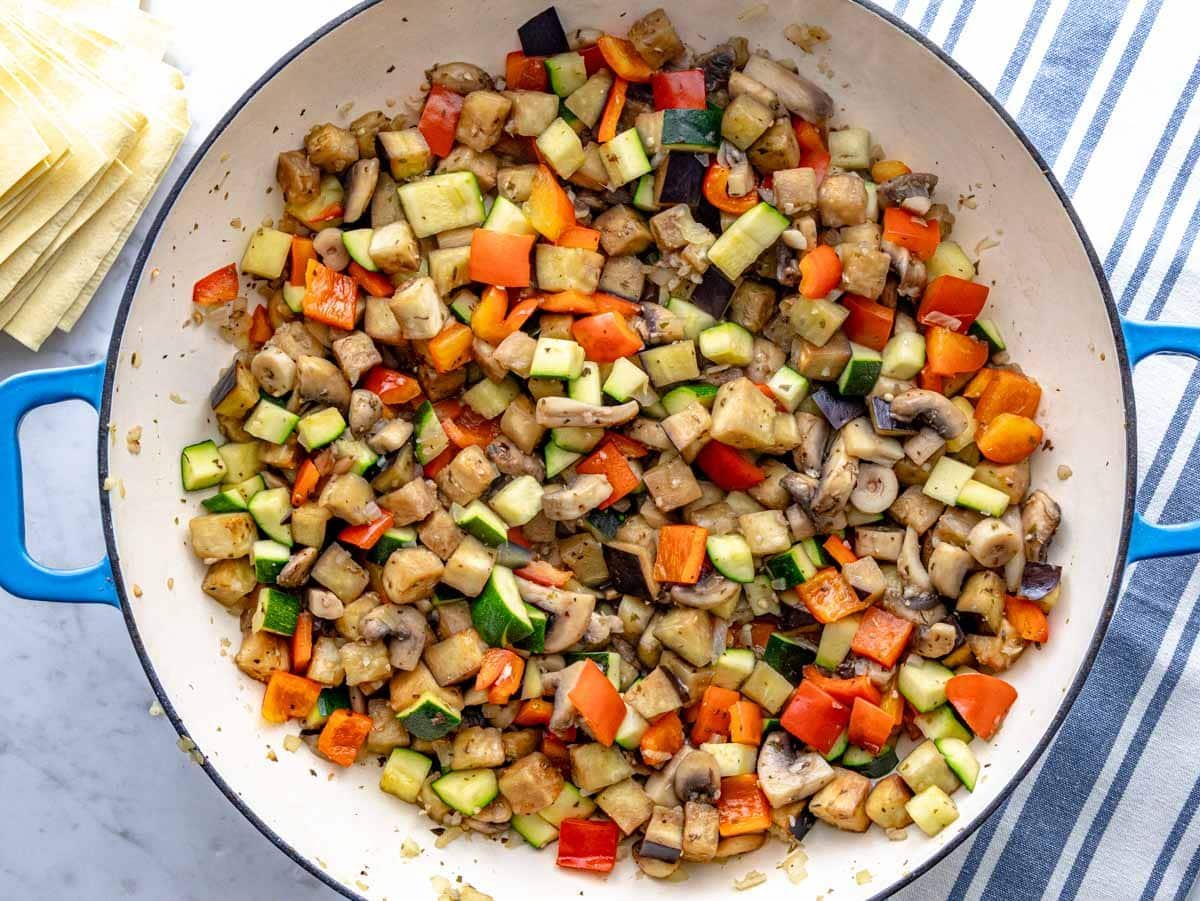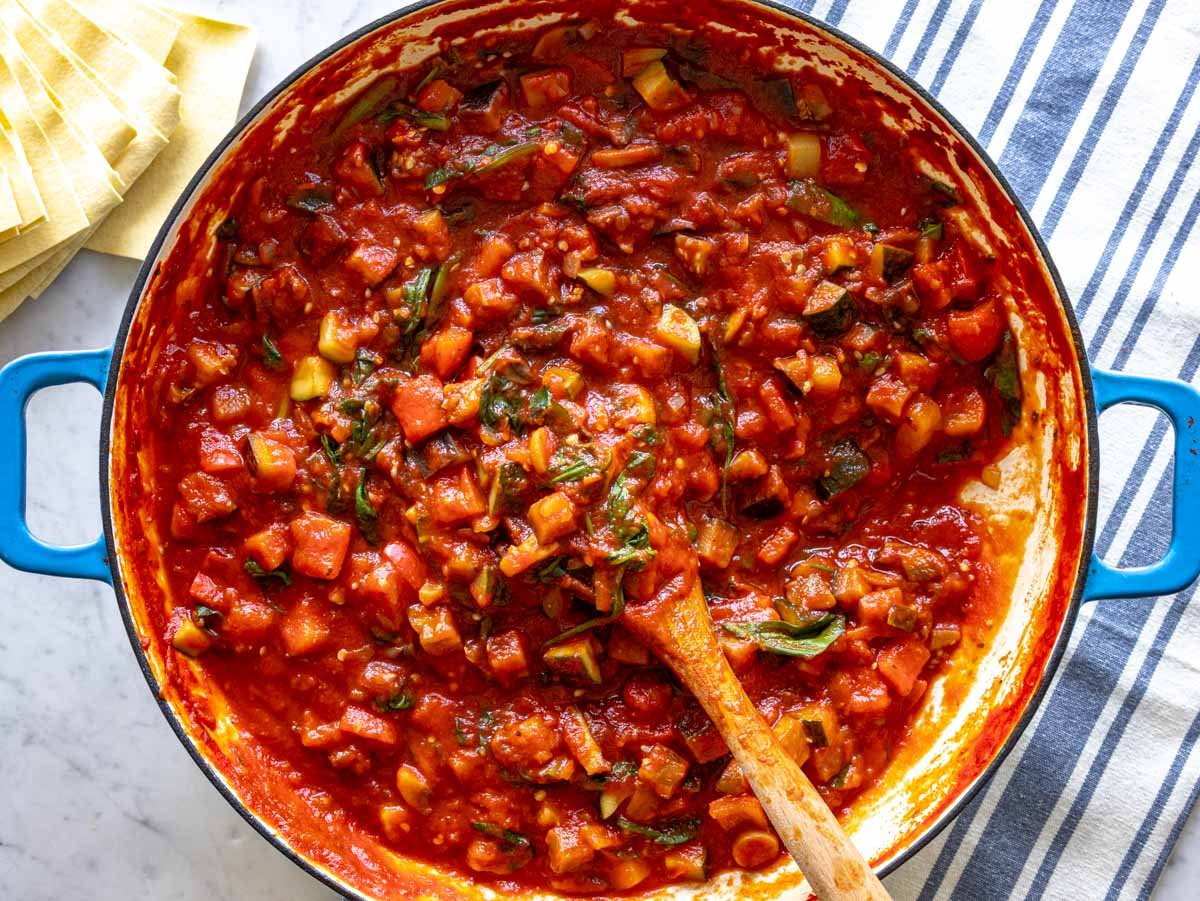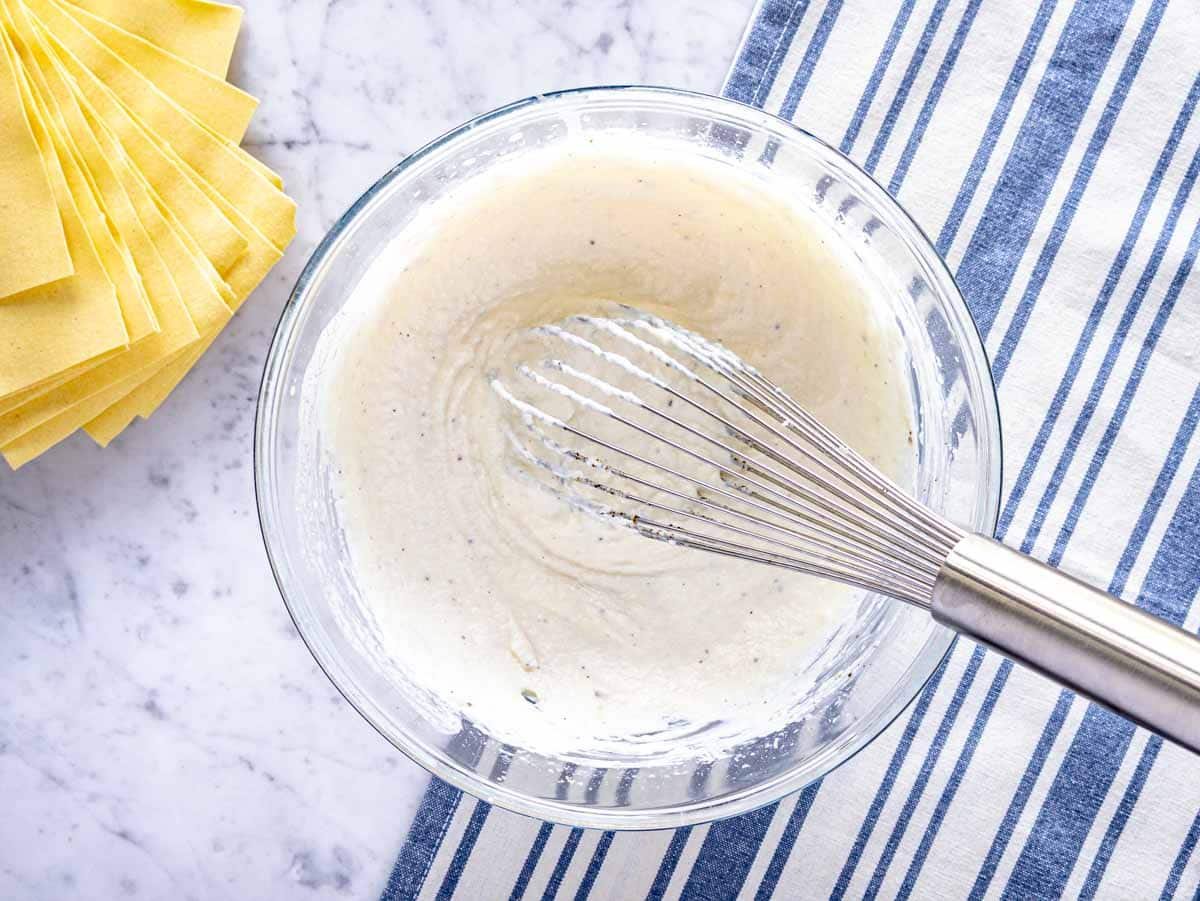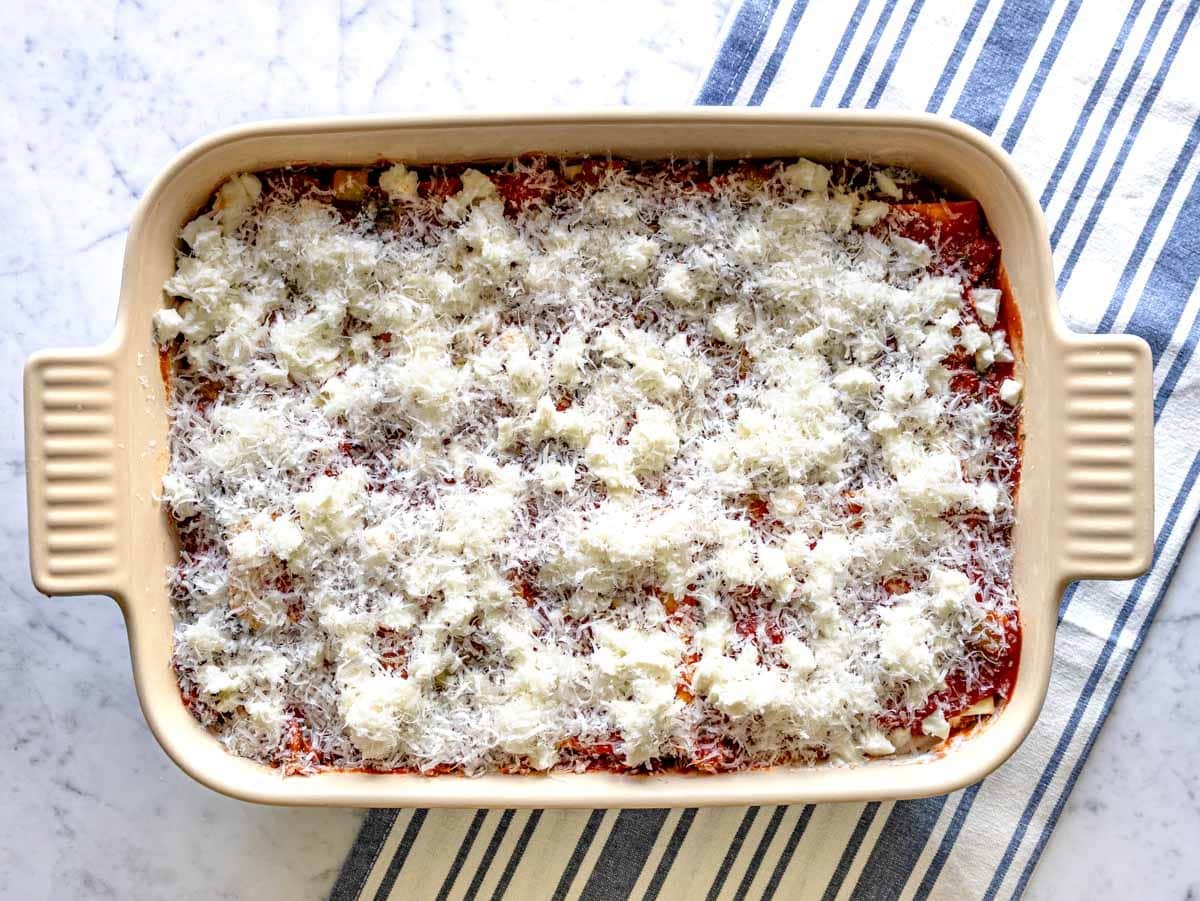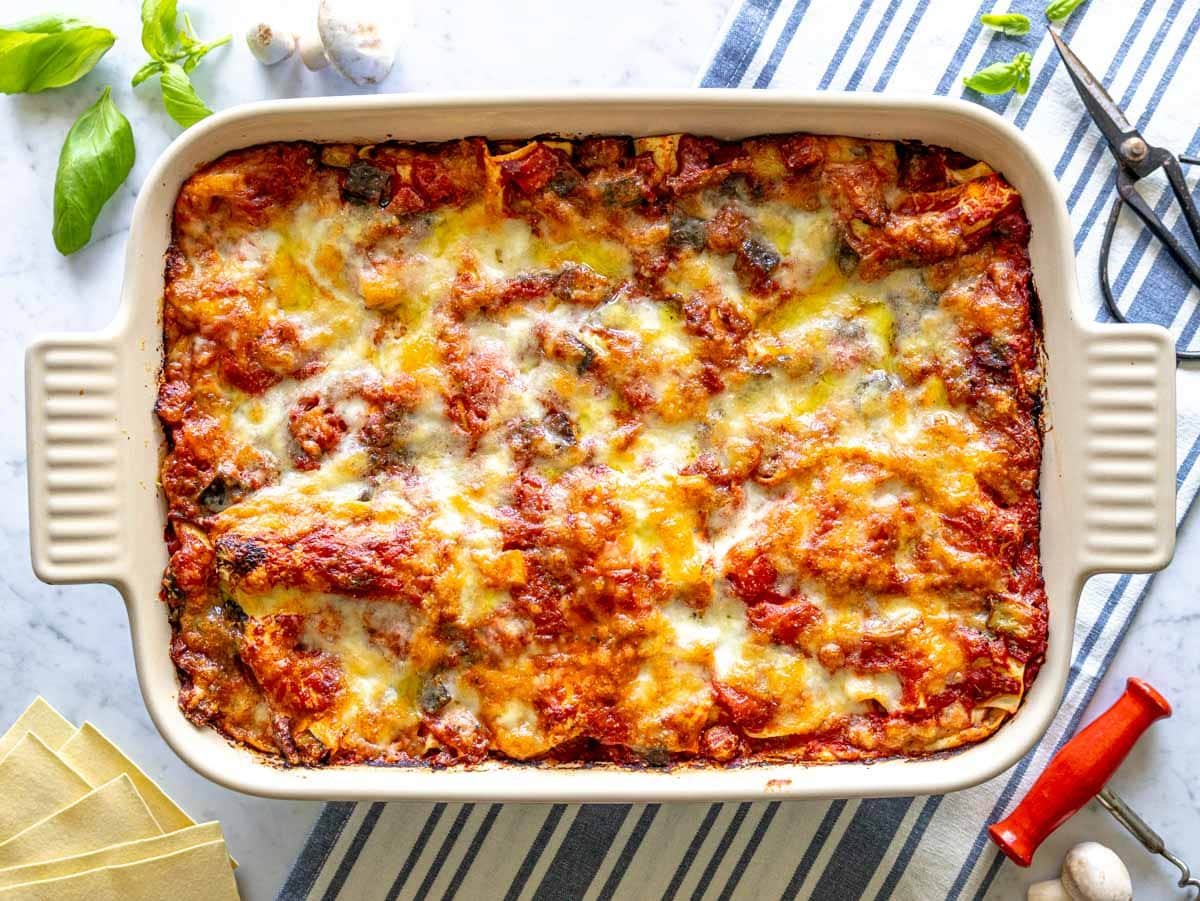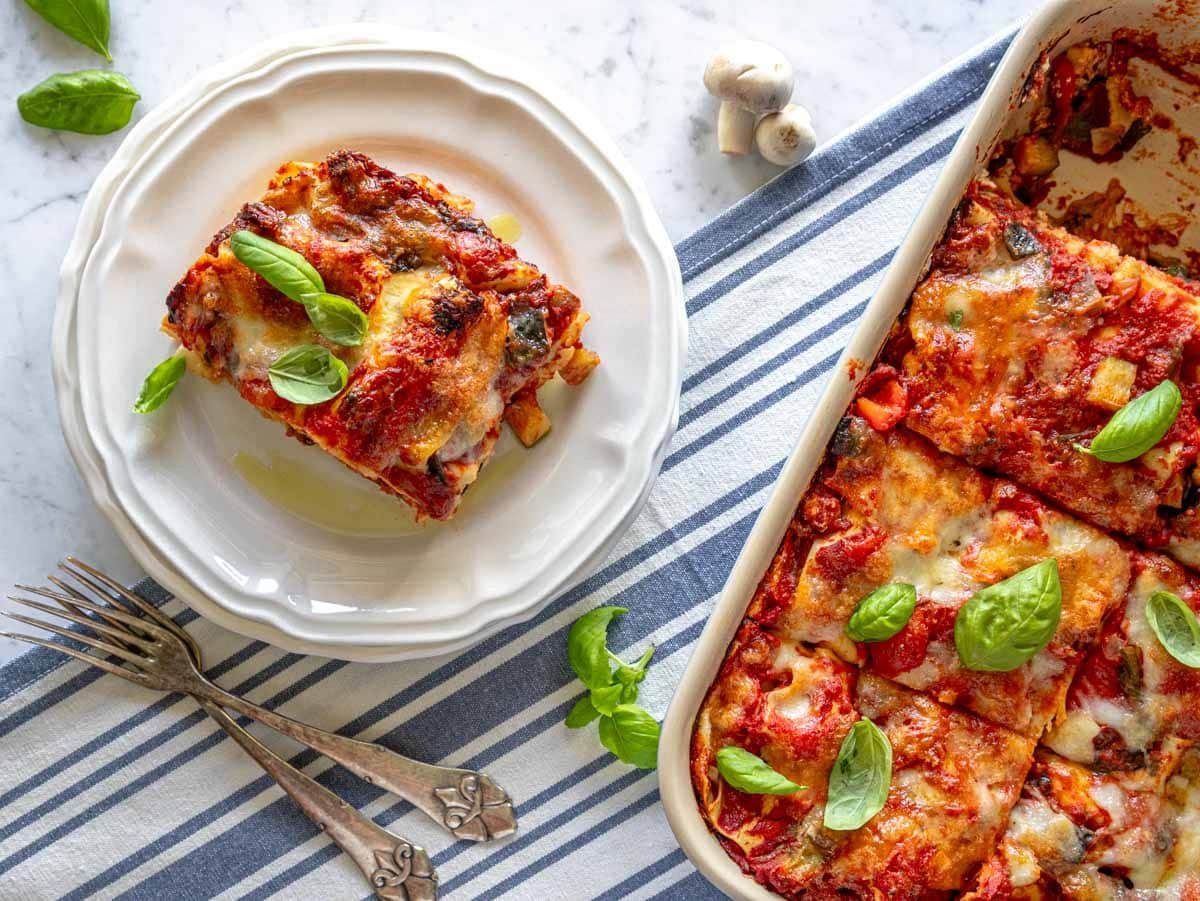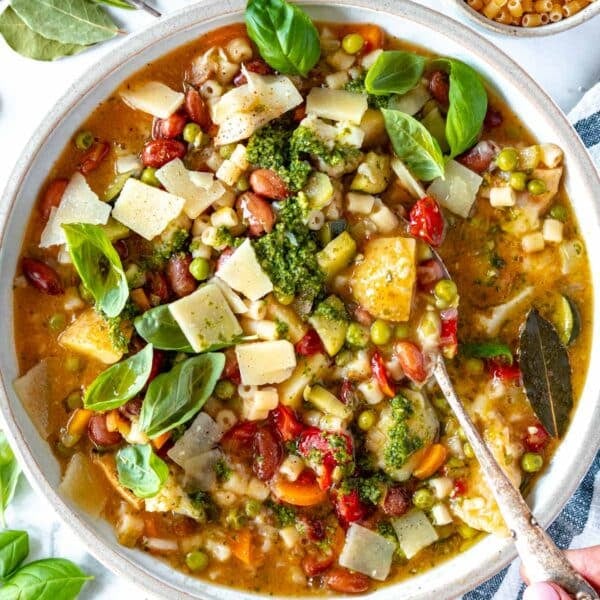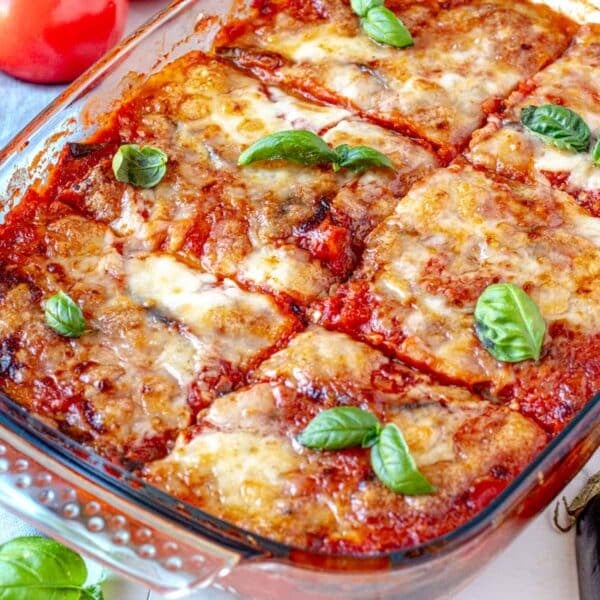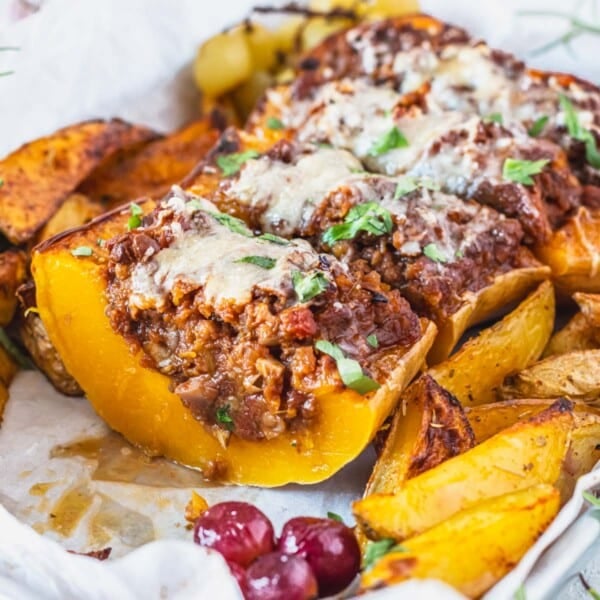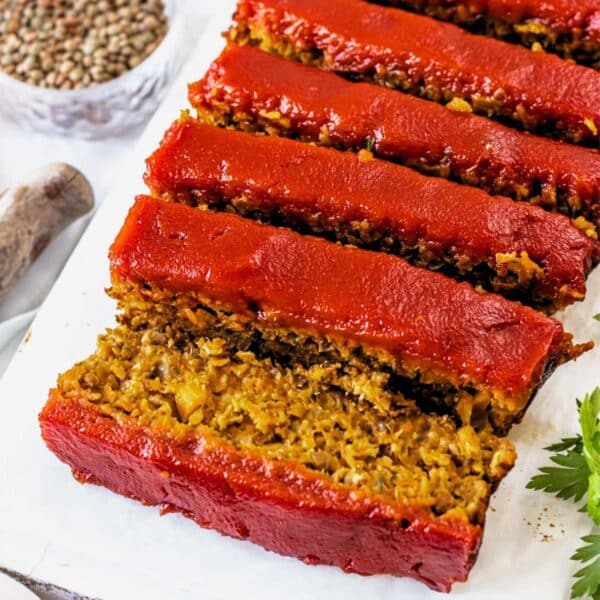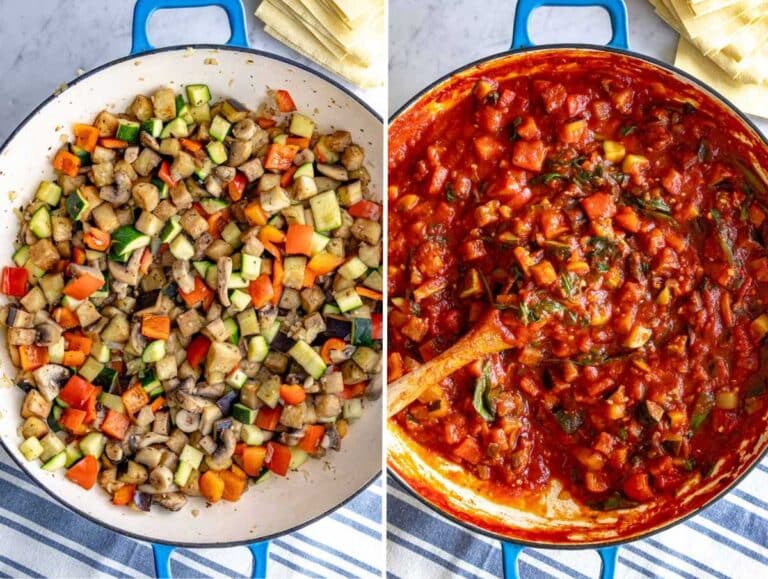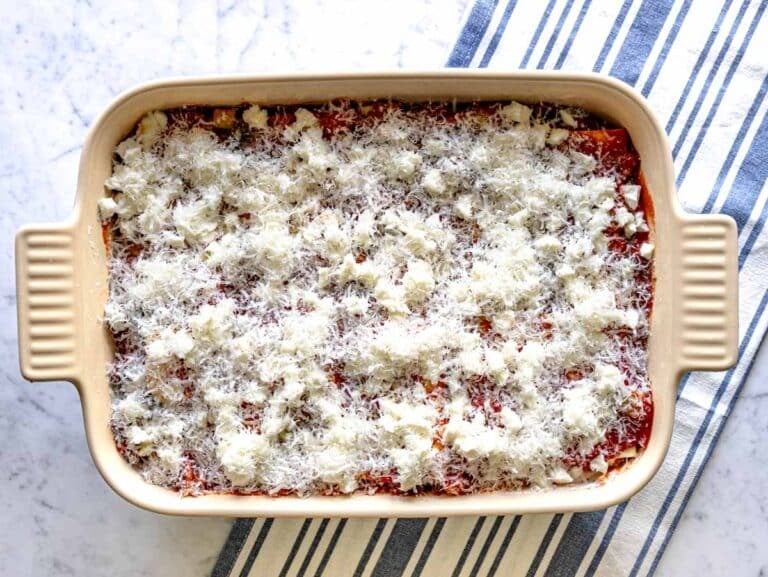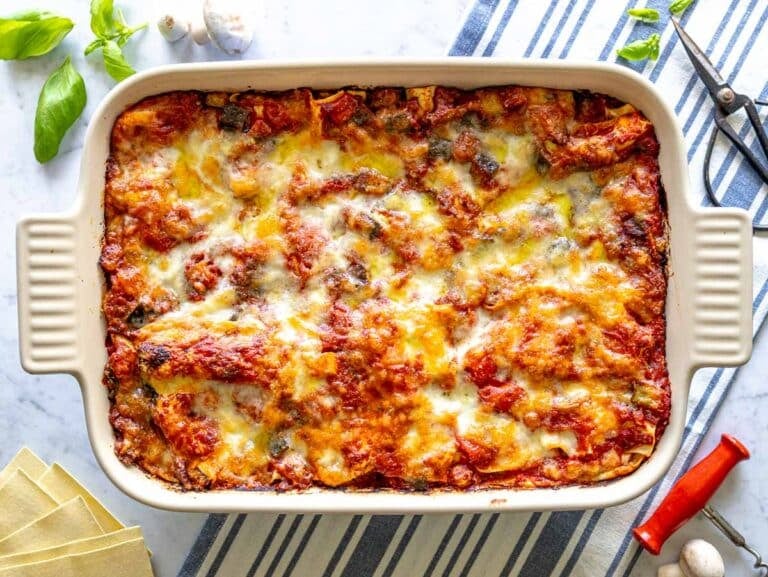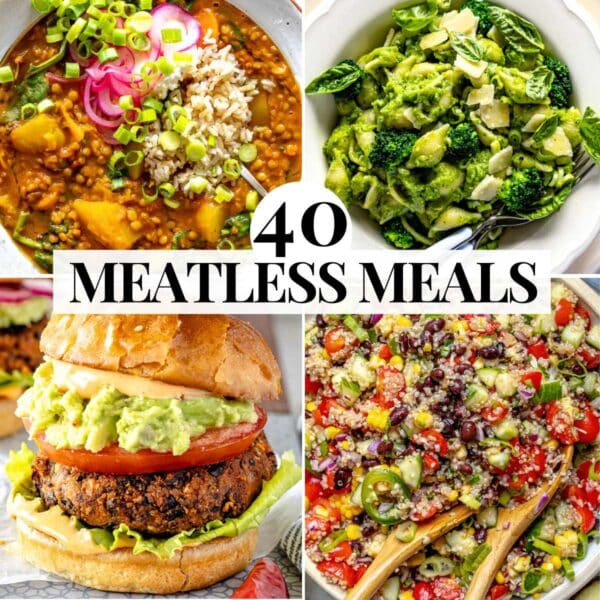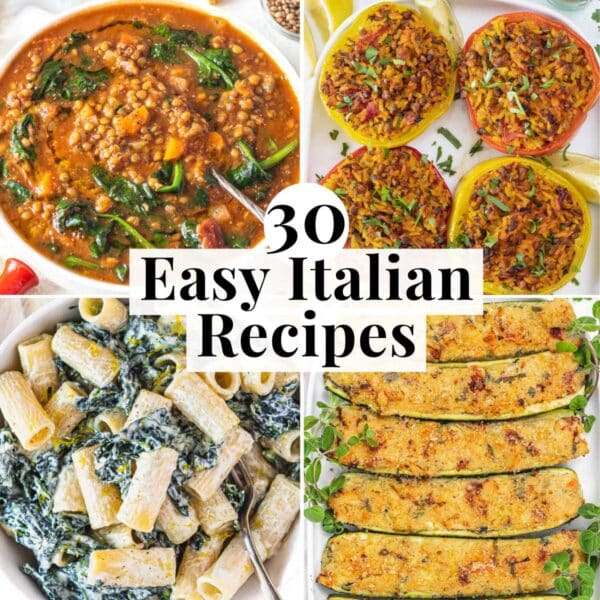Best Vegetable Lasagna Recipe
Who can resist the comforting embrace of a hearty lasagna? But not everyone wants to indulge in the meaty version, and that’s where this vegetarian lasagna recipe truly shines! It combines all the best elements of the classic while omitting the meat and adding creamy bechamel sauce and layers of fresh veggies.
Olive Oil: Used to sauté the vegetables and add richness. Garlic: Adds a layer of pungent aromatic flavor. I always use freshly minced garlic cloves. Zucchini: Provides a contrasting crisp texture and a slightly sweet note. Yellow Squash: Similar to the zucchini, it adds a delicate crunch and a touch of natural sweetness. Red Bell Pepper: Gives the dish a pop of color and another layer of flavor. Frozen Spinach: Thawed and thoroughly squeezed dry, frozen spinach adds vibrant color and delicious earthiness. Oven-Ready Lasagna Noodles: These convenient sheets of dried pasta don’t require pre-boiling and provide the foundation. Ricotta Cheese: Brings a creamy, slightly tangy richness to the filling. Egg: Serves as a binding agent that helps to create a smooth texture. Salt and Pepper: Used to season the ricotta mixture to taste. Marinara Sauce: Adds some umami that complements the rich bechamel. You can use store-bought or homemade marinara sauce. Cheeses: Shredded mozzarella cheese and parmesan cheese form the gooey good top layer of the lasagna.
Butter: Serves as a key ingredient that adds richness to the bechamel sauce. All-Purpose Flour: Used as a thickening agent in combination with the butter to create a smooth, velvety consistency. Milk: Provides the creamy liquid base of the bechamel. Keep in mind that lower-fat milk will produce a lighter consistency. Nutmeg: A pinch of nutmeg adds depth to the sauce by giving it a touch of warmth. Salt and Pepper: Used to season the sauce and develop the flavor.
What sets this recipe apart is the convenience it offers. From using oven-ready pasta that eliminates the need to boil lasagna noodles to straightforward steps that teach you how to make bechamel, this recipe is all about creating a gourmet dish with very little effort. To begin, preheat your oven to 375°F (190°C). Then grab a 9×13-inch baking dish and set it aside. While the oven is warming up, heat the olive oil over medium heat in a large skillet. Then add the garlic, zucchini, yellow squash, and bell pepper and saute for a few minutes until the veggies are tender. It’s time to create the velvety white sauce! First, melt the butter over medium heat in a saucepan. Next, whisk in the flour and cook it for one minute while stirring continuously. Then slowly add the milk while still whisking constantly to prevent lumps from forming. Now, season the sauce with nutmeg, salt, and pepper, and continue to cook the bechamel until it thickens up. With your sauce ready, it’s time to focus on the filling. In a medium bowl, combine the ricotta cheese, egg, drained frozen spinach, salt, and black pepper. Then whisk the mixture together until fully incorporated. The next step is to construct your tasty masterpiece! To begin, spread a thin layer of marinara sauce on the bottom of your 9×13-inch baking dish. Next, layer the ricotta-spinach mixture, followed by some sautéed vegetables and a drizzle of the bechamel sauce. Then repeat the layers, finishing with a layer of marinara sauce over the noodles. Now, sprinkle the top of your lasagna with shredded mozzarella and parmesan cheese to complete the dish. To bake, cover the lasagna in aluminum foil and then transfer it to the preheated oven to bake for an hour. Then uncover the dish and let it bake for an additional 10 to 15 minutes or until the cheese becomes golden brown and bubbly. When done, let the lasagna rest for 10 minutes to set. Then serve your vegetable lasagna with some garlic knots and an antipasto platter to start, if you like!
Storage
To store, cover the vegetable lasagna with plastic wrap or aluminum foil and keep it in the fridge for up to 4 days. For longer storage, you can keep it in the freezer for up to 3 months in an airtight container. To reheat, warm it in the microwave on medium power or in the oven at 350°F (178°C).
Discover More Vegetarian Recipes
Pasta Primavera Fresh Spring Rolls Arugula Walnut Pesto Pasta Vegetable Tortellini Soup Pasta Pomodoro

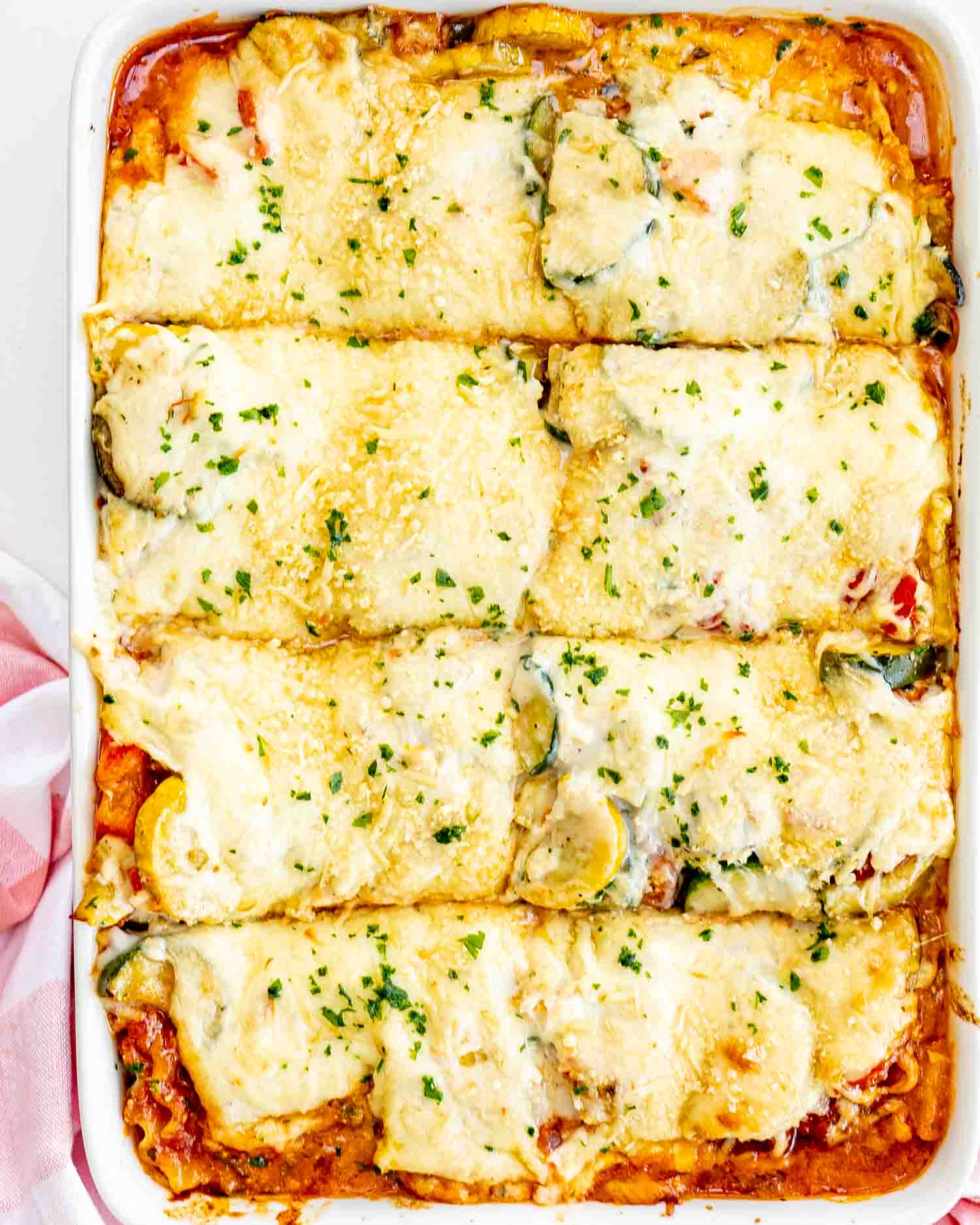
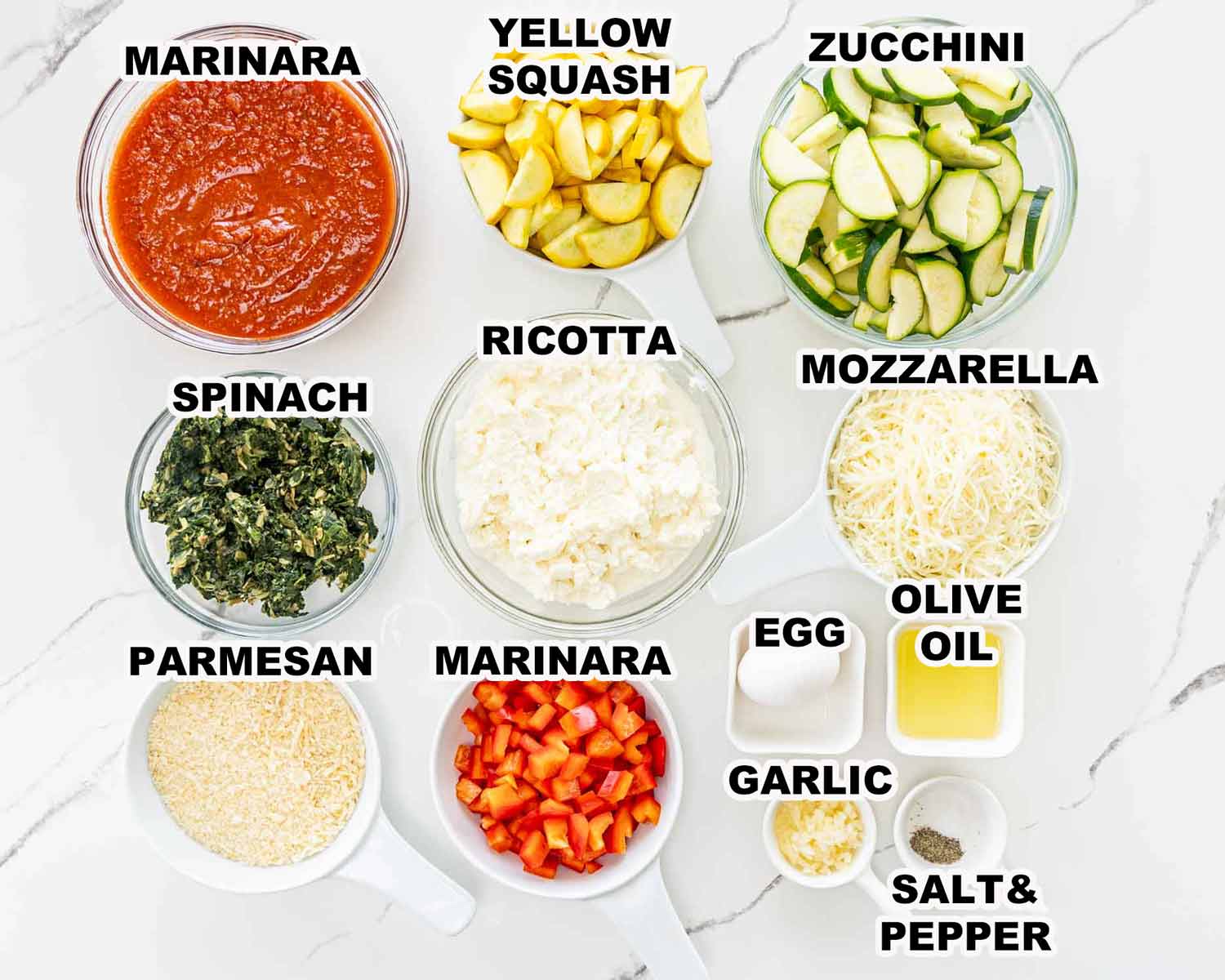
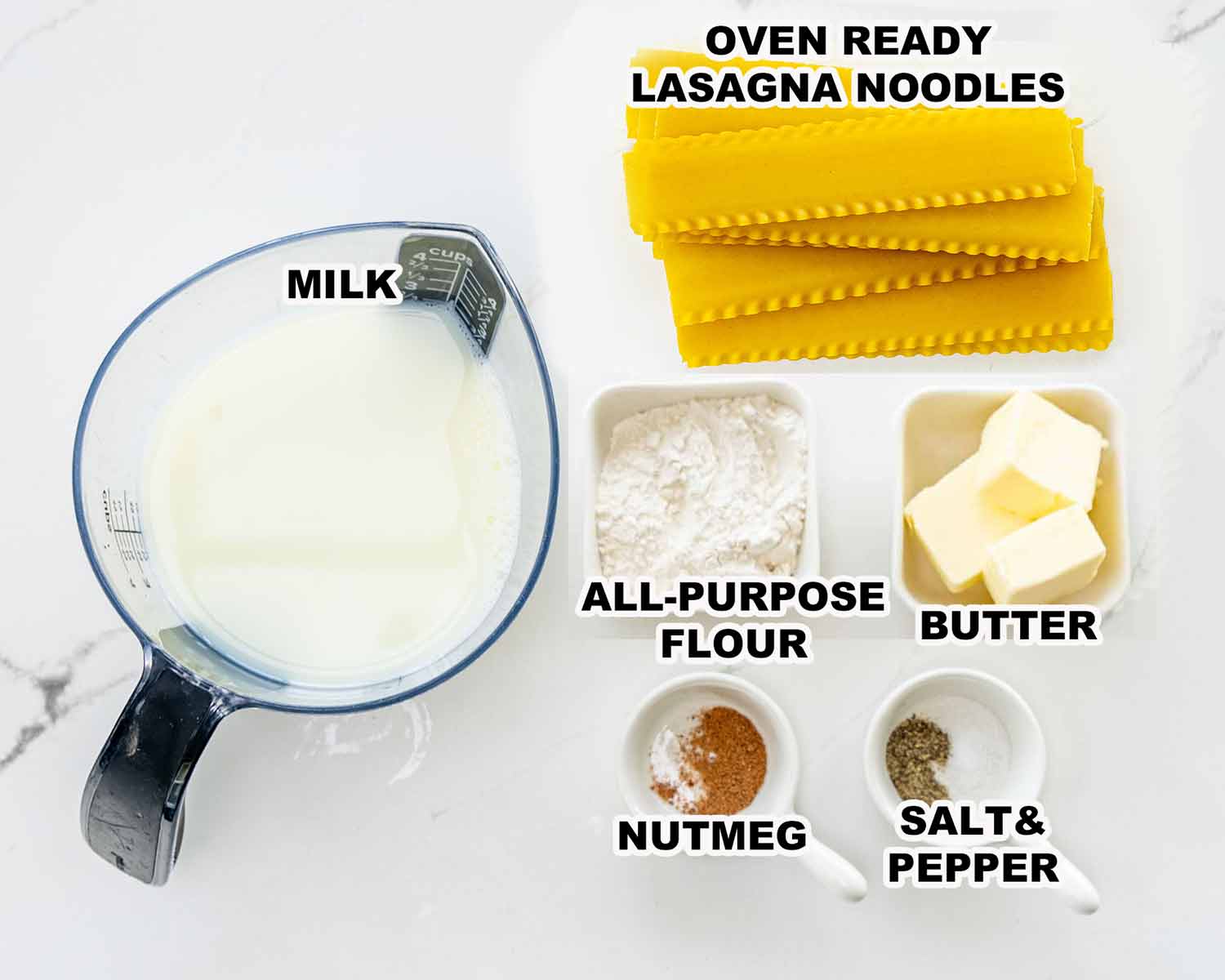

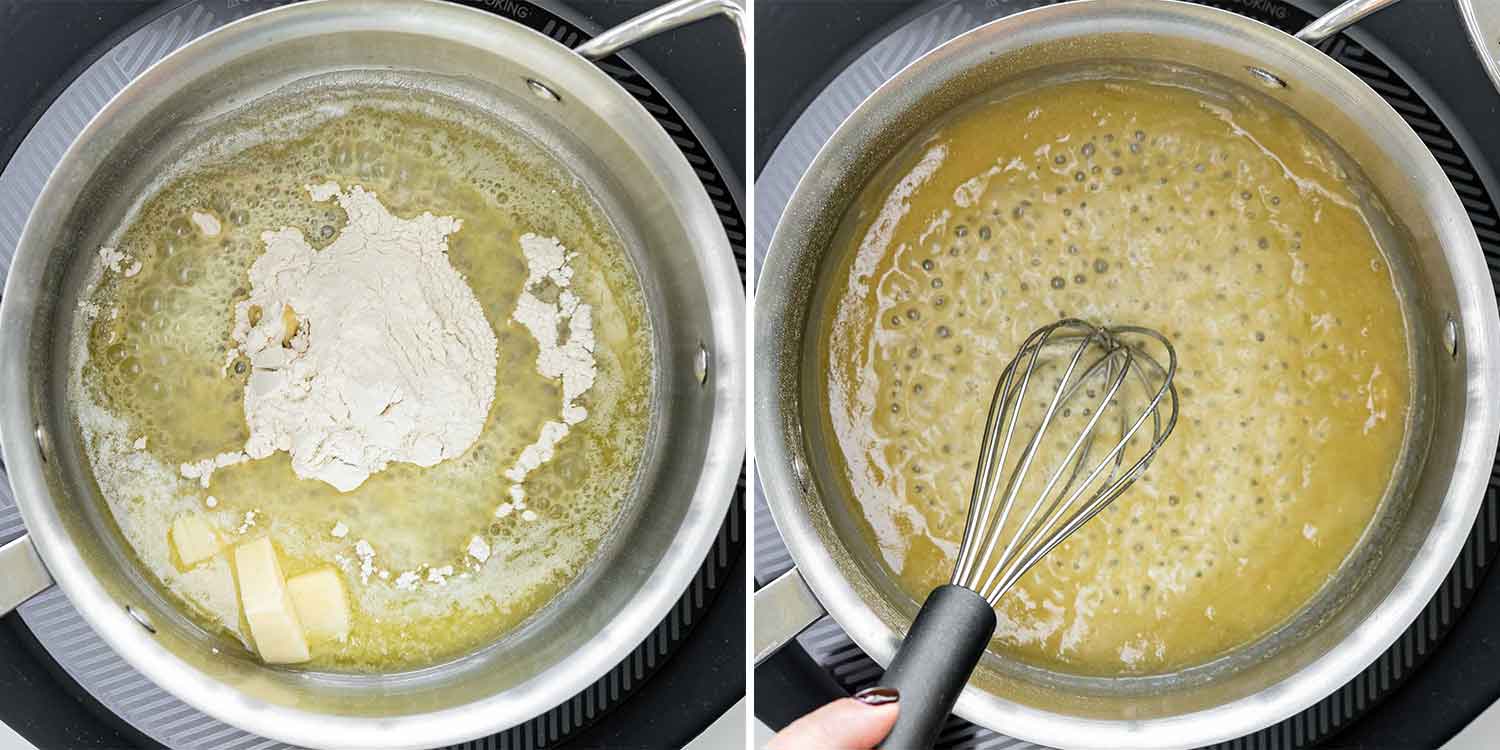

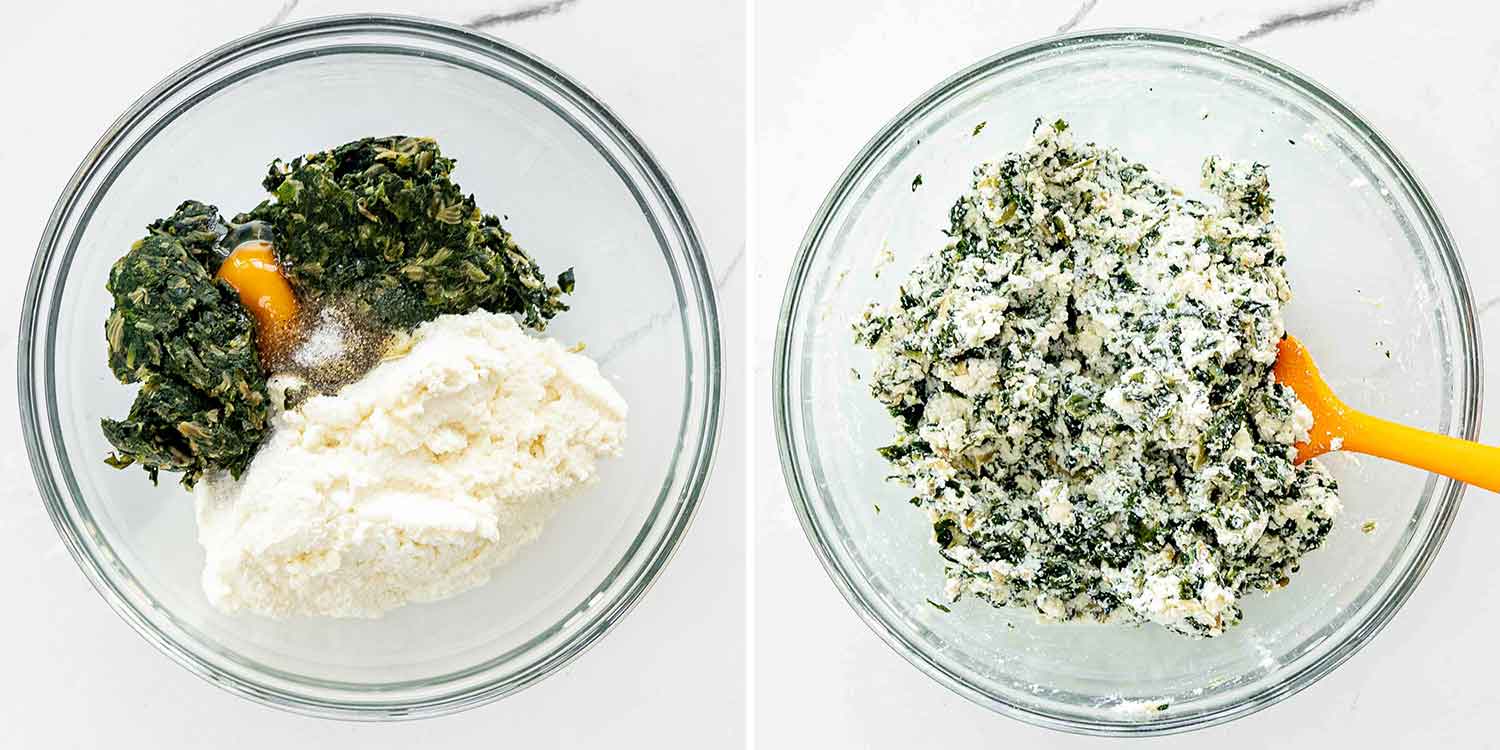


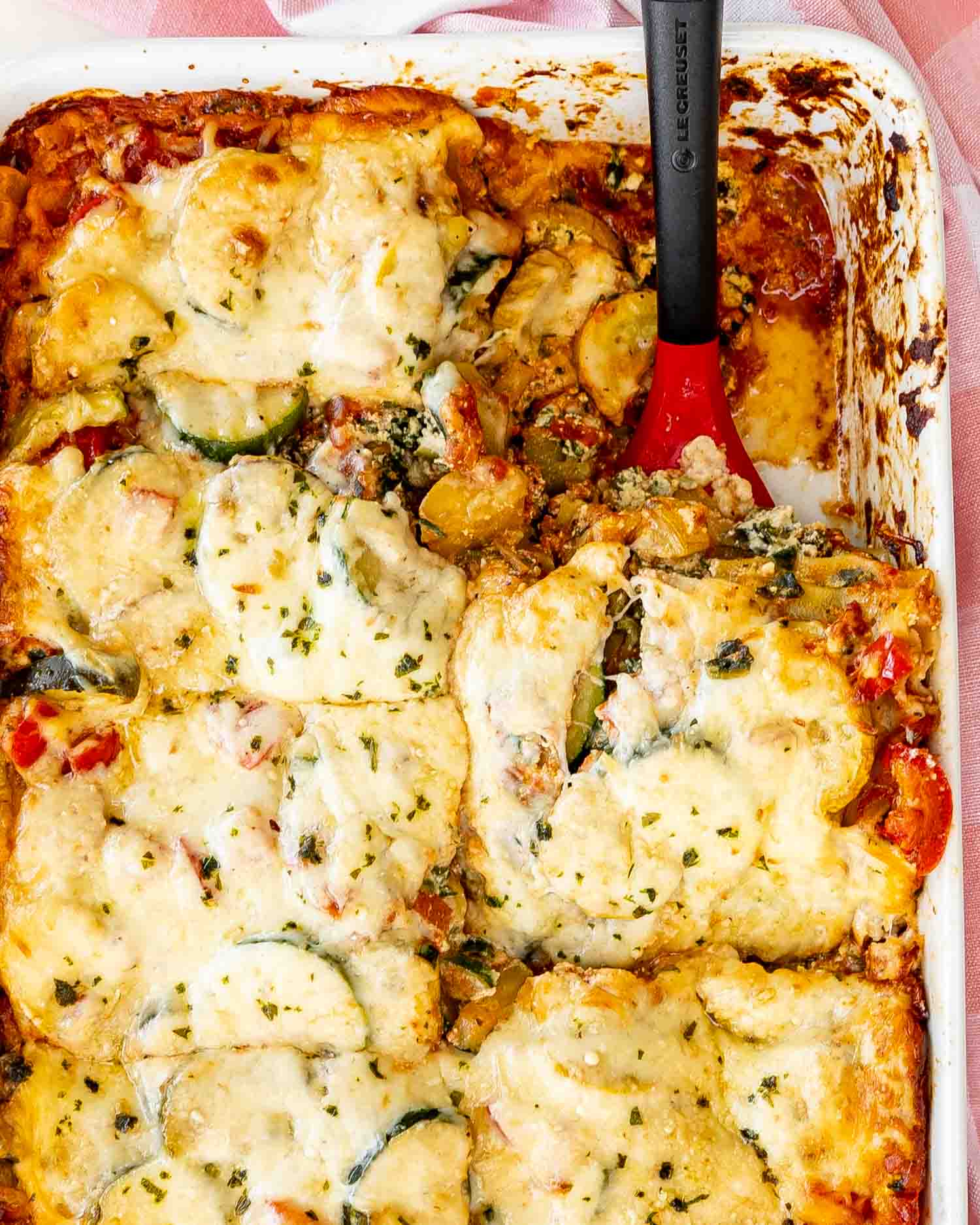
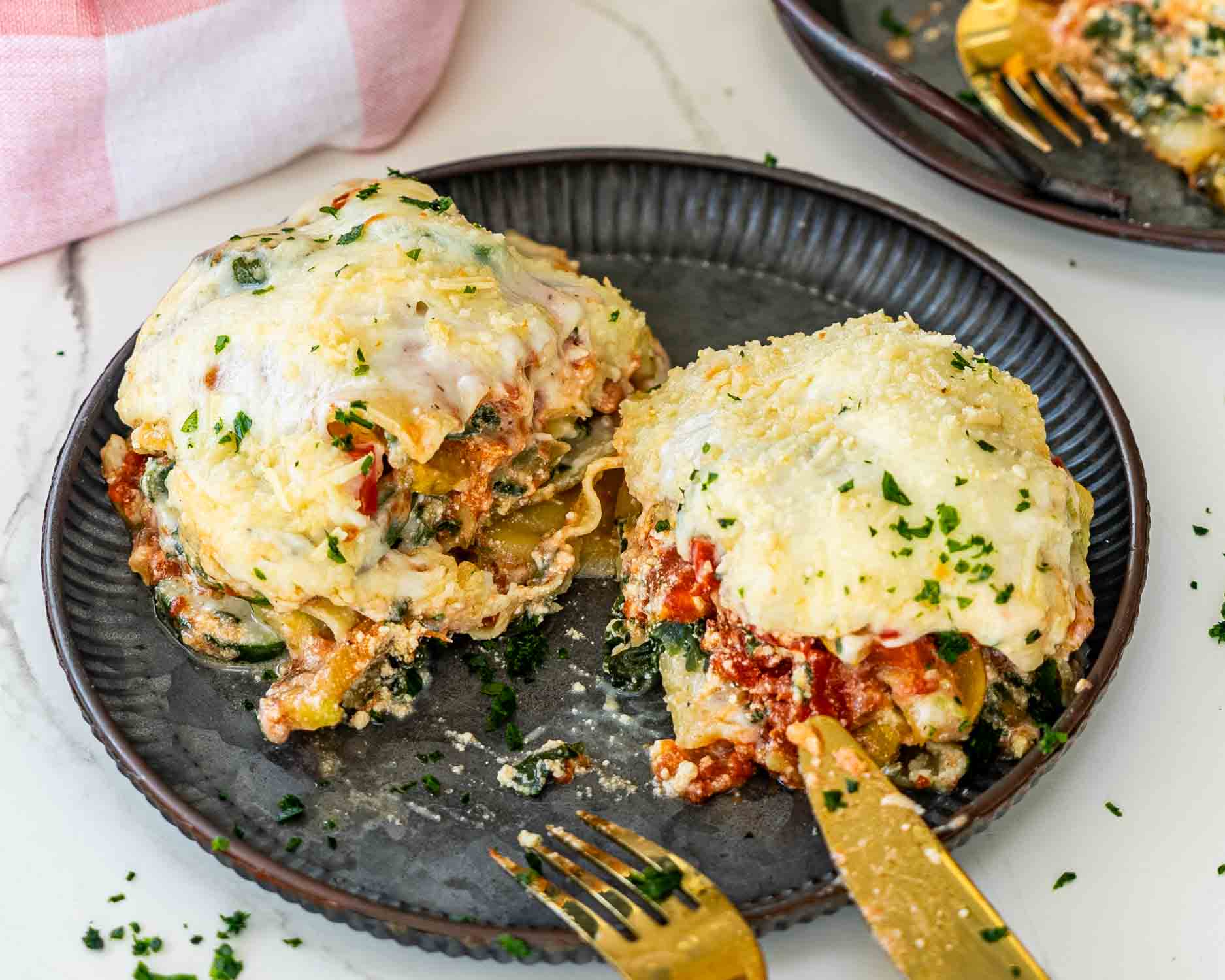
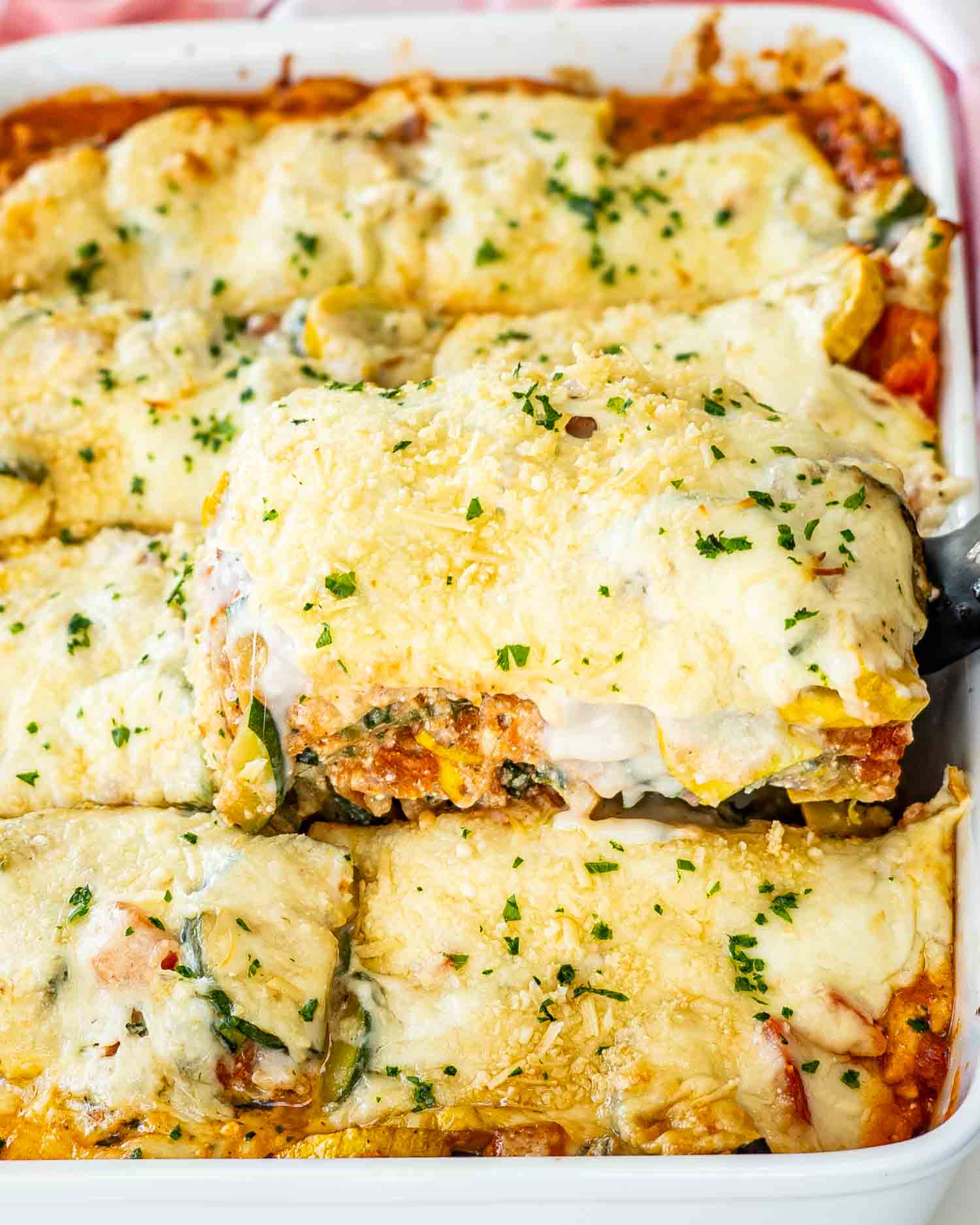
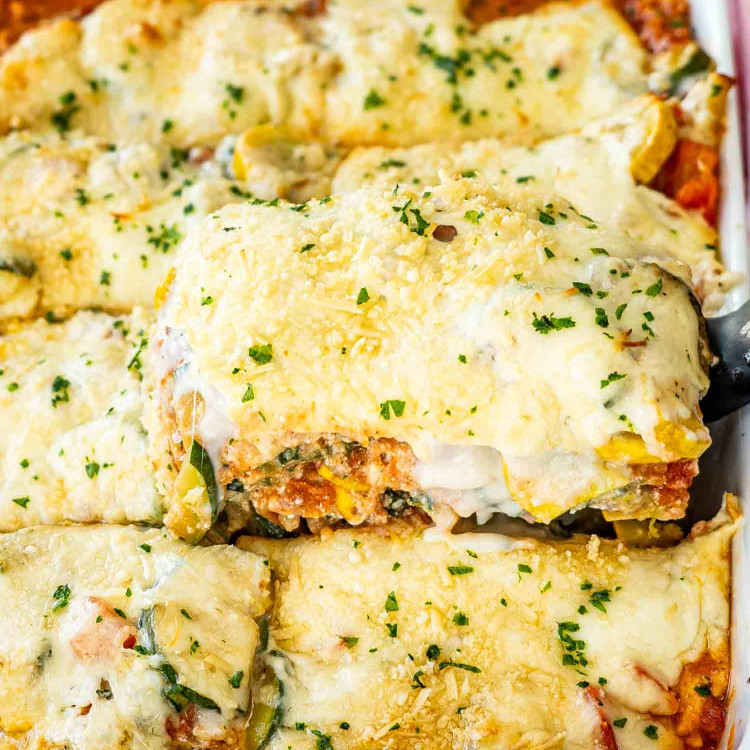


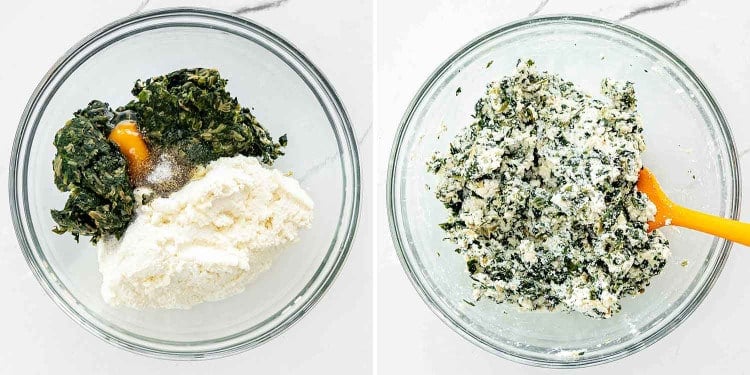
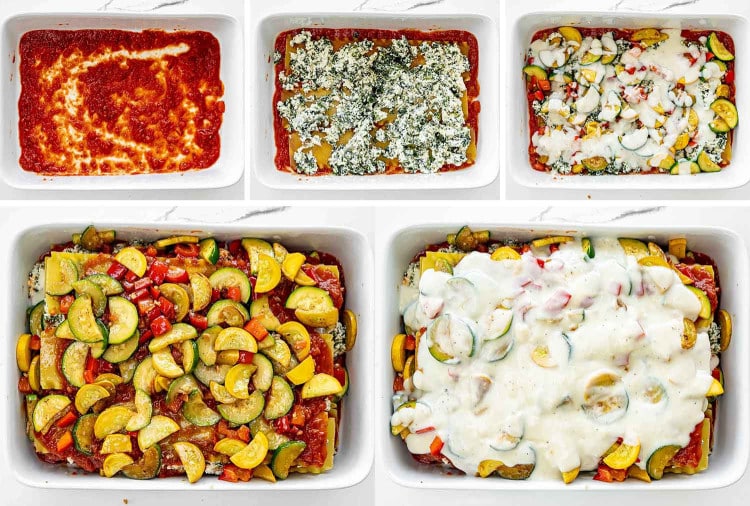


title: “Vegetable Lasagna” ShowToc: true date: “2024-11-01” author: “Harold Emanuel”
It’s a deeply satisfying and wholesome recipe. Tender layers of pasta meld with a rich, flavorful tomato sauce enriched with diced vegetables. Our vegetable lasagna is filled with a creamy ricotta-parmesan sauce and melty mozzarella cheese, making it the perfect meat-free option for vegetarians and omnivores alike. Like our vegetarian lasagna, lasagna soup, and cannelloni recipes, this vegetable lasagna is easy to put together and suitable for meal prep. It’s packed with flavor and substance, and it will satisfy vegetarians and omnivores alike. As we developed the recipe, we made sure to stay 100% true to Italian flavors. After all, from Neapolitan pizza, gnocchi alla sorrentina, eggplant parmigiana, and pasta pomodoro, everyone loves the oozy combination of tomato sauce, fresh basil, and melty cheese. We recommend using no-boil noodles to save effort and time. For the cheese sauce, we make one with ricotta, parmesan, and lemon zest that doesn’t need to be cooked! It’s well-tested, easy, and delicious. We used the same sauce in our pumpkin pasta bake, artichoke pasta, and pasta al limone, and you guys loved it!
1. Prepare your ingredients
The ingredients for vegetable lasagna are simple and easy to find. We list substitutions in the chapter below. TOMATO SAUCE: You’ll need tomato puree or passata, finely chopped onion, pressed garlic, olive oil, dried oregano, fresh basil, and mixed vegetables cut into small dice. We used eggplant (aubergine), zucchini (courgette), bell pepper, mushrooms, and spinach. CHEESE SAUCE: You’ll need ricotta, grated parmesan cheese, lemon zest, and water. OTHER INGREDIENTS: No-boil lasagna sheets and mozzarella.
2. Make the tomato sauce
Heat the olive oil in a large skillet. Add the chopped onion and sauté for 4 minutes, then add the pressed garlic and sauté for one more minute. Add the diced eggplant, zucchini, bell pepper, and mushrooms, and season with dried oregano, salt, and black pepper. Sauté on high heat for 5 minutes, stirring often. Stir in the tomato puree and water, and simmer for about 20 minutes or until the vegetables are cooked. Now, add the spinach and basil leaves and let them wilt (about 2 minutes). Taste and adjust for salt. Tip: The sauce should not be thick. A liquid sauce with more water helps cook the lasagna sheets and prevents the dish from drying in the oven.
3. Make the cheese sauce
Add ricotta, grated parmesan, water, lemon zest, a pinch of salt, and black pepper to a bowl. Whisk until combined. Tip: The cheese sauce should be pretty liquid and pourable.
4. Assemble the lasagna
Preheat the oven to 350°F or 180°C. We recommend making lasagna with four layers of pasta for the best sauce-to-pasta ratio. Tip: The top layer should have slightly more tomato sauce than the middle layers. Keep this in mind as you build the lasagna. The top layer is with grated parmesan and mozzarella, with no cheese sauce. Repeat the steps (cheese sauce + tomato sauce) until you have four layers of pasta sheets. Arrange the pasta sheets in the opposite direction of the previous layer (vertical, horizontal, vertical, horizontal). Finish the top layer with tomato sauce, chopped mozzarella, and grated parmesan. Cover with foil and bake in the center of the oven at 350°F or 180°C for 15 minutes. Remove the foil and bake for 15 more minutes. You can use the grill function for the last 5 minutes to brown the cheese. Let the lasagna cool and set for 15 minutes before cutting it into 6 – 8 pieces. Top with plenty of fresh basil and enjoy. Eggplant: substitute fennel, artichokes, or asparagus. Zucchini: substitute winter squash such as butternut, acorn, delicata, or kabocha squash. Bell pepper: substitute carrots, celeriac, or parsnip. Mushrooms: substitute broccoli, cauliflower, or topinambur. Spinach: substitute chopped kale, chard, or mustard greens. Tomato puree or passata: substitute crushed tomatoes. Dried oregano: substitute Italian herb mix. Fresh basil: best not to substitute. Ricotta: we recommend whole-milk ricotta. Substitute sheep ricotta. Parmesan: substitute pecorino cheese. Mozzarella: we recommend using a fresh fiordilatte mozzarella. Substitute grated mozzarella for pizza. No-boil lasagna noodles: substitute regular ones, but you have to pre-boil them first. Vegan: to make the recipe vegan, you can use non-dairy ricotta, non-dairy parmesan, and a non-dairy cheese that melts to replace the mozzarella. Gluten-free: to make the recipe gluten-free, use gluten-free lasagna sheets. You can also assemble it, cover it, store it in the fridge and bake up to 12-16 hours later. Refrigerator: Keep leftovers in the fridge in the same casserole wrapped in plastic. Alternatively, transfer to an airtight container and store for 4 days. Freezer: We recommend freezing the lasagna before baking it. Then, bake it from frozen for 20 minutes, covered with aluminum foil, and uncovered for 10 – 15 more minutes. Reheat: You can reheat vegetable lasagna in the air fryer, oven, or microwave.
Similar recipes
For many more Italian ideas, check out our compilation with 60+ Italian recipes. HOLIDAY RECIPES: Stuffed butternut squash, vegetarian lasagna, cannelloni (manicotti), lentil loaf, mushroom Wellington, baked ziti, cauliflower mac and cheese, apple crisp, sweet potato casserole, vegetarian stuffing. For more holiday ideas, check out our holiday recipe compilation.
Minestrone Soup
Eggplant Parmigiana
Stuffed Butternut Squash
Lentil Loaf
45 Easy Vegetarian Dinner Recipes
30 High Protein Vegetarian Meals
40 Easy Meatless Meals
30 Easy Italian Recipes
